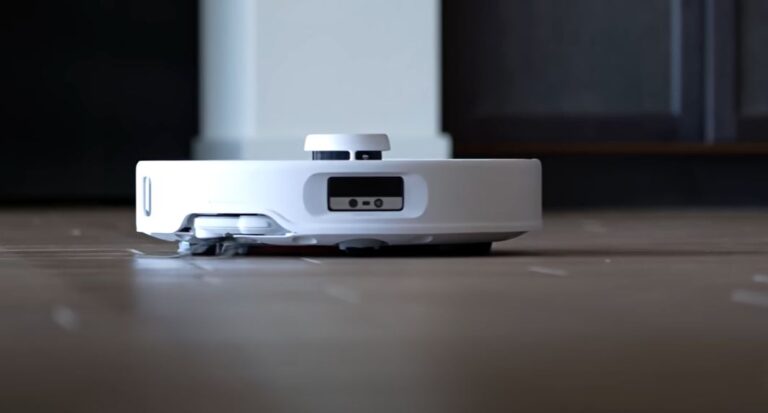Step 3 – Conceal Imperfections Like a Pro
The magic of concealer lies in its dual ability to provide both coverage and brightness. Many people underestimate how strategic concealer application can completely transform the face by addressing specific concerns like dark circles and blemishes without creating a heavy, mask-like effect.
Based on my experience working with makeup artists and testing dozens of products, I’ve found that the key to natural-looking concealer is color correction and precise placement. For under-eye areas, choose a formula that’s one shade lighter than your foundation with subtle peach or salmon undertones to counteract the blue-purple tones of dark circles. For active blemishes, match your exact foundation shade to avoid highlighting the very spots you’re trying to conceal.
Apply Concealer Strategically
Use lighter shade under eyes for brightness: Instead of drawing large triangles, apply three small dots under each eye—inner corner, center, and outer corner—then blend with a damp beauty sponge or synthetic brush. This technique provides targeted brightness without settling into fine lines.
Dab over blemishes to even skin tone: Use a precise, pointed brush to pat concealer directly onto blemishes, then blend only the edges without disturbing the coverage on the spot itself. This provides concentrated coverage that lasts longer than finger application.
Step 4 – Add Dimension and Color
Flat, one-dimensional color is the enemy of natural-looking makeup. The art of using blush, bronzer, and highlighter lies in their ability to recreate the natural shadows and light that define facial structure. When applied correctly, these products provide contouring, glow, and warmth that makes makeup look like it’s part of your skin rather than sitting on top of it.
Apply Blush for Natural Flush
After testing various application techniques across different face shapes, I’ve found that focusing on the apples of cheeks and blending upward toward the temples creates the most universally flattering, lifted appearance. Cream formulas tend to look most skin-like, while powders offer longer wear for oily skin types. Smile gently to identify the apples of your cheeks, then apply color there before diffusing it upward along your cheekbones.
Contour with Bronzer
The purpose of bronzer is to add warmth and subtle definition, not to create stark shadows. To define cheekbones and jawline, use a matte bronzer about two shades darker than your skin tone applied in the hollows of your cheeks, along the hairline, and under the jawline. For a sun-kissed effect, lightly dust the same product across the bridge of your nose and forehead where the sun would naturally hit.
Highlight Key Areas
Strategic highlighting brings forward the high points of your face. Apply a luminous highlighter to the tops of your cheekbones, brow bones, and the bridge of your nose to create dimension. The key is restraint—you want a subtle glow rather than obvious stripes of shimmer.
Step 5 – Define Your Eyes
Eye makeup has the power to completely transform your look by adding depth and definition. The goal is to enhance your natural eye shape rather than fight against it. Through trial and error with countless techniques, I’ve found that starting subtle and building intensity creates the most wearable day-to-night looks.
Use Eyeshadow for Depth
Always start with a neutral base shade slightly lighter than your skin tone all over the lid to even out discoloration and create a smooth canvas. Then, add darker tones in the crease for definition using a fluffy blending brush. The most common mistake is choosing shades that are too dark too quickly—build color gradually for a seamless blend.
Line Eyes for Shape
Whether you choose pencil or liquid liner, the technique should complement your eye shape. For close-set eyes, concentrate thickness on the outer corners. For wide-set eyes, bring liner further inward. The goal is custom precision that enhances your unique features rather than following rigid trends.
Enhance Lashes with Mascara
The right mascara application can make your eyes appear more open and awake. To prevent clumping, wipe excess product from the wand before application. Wiggle the wand at the base of your lashes and pull through to the tips for maximum lengthens and volumizes lashes effect. For a clean finish, use a lash separator or clean mascara wand between coats.
Step 6 – Perfect the Brows
Well-groomed brows frame the face and provide shape and symmetry to your overall look. The current trend embraces natural fullness and definition rather than over-plucked, harsh lines. As someone who has experimented with everything from eyebrow pencil to brow gel and pomade, I’ve found that a combination approach typically yields the most natural results.
Fill and Define Brows
Using an eyebrow pencil that matches your natural hair color, use light strokes following natural growth to mimic individual hairs rather than drawing a solid line. Focus on sparse areas rather than completely redrawing the brow shape. Then, set with gel for all-day hold using a clear or tinted formula brushed upward and outward to create feathery texture.
Step 7 – Finish with Lips
The final touch that pulls your entire look together is well-executed lip color. The right lipstick or lip gloss should provide both moisture and rich color payoff without feathering or fading awkwardly. Through testing hundreds of formulas, I’ve learned that preparation is just as important as product selection.
Prep Lips
To achieve a smooth texture, gently exfoliate and moisturize lips before applying any color. A homemade scrub of sugar and honey works wonderfully, or you can use a soft toothbrush to slough away dry skin. Follow with a hydrating balm, letting it absorb for a few minutes before color application.
Apply Lip Liner and Lipstick
Using a lip liner that matches your natural lip color or your chosen lipstick, outline for definition along your natural lip line, focusing on the cupid’s bow and the center of the bottom lip. Then, fill in with matching color or gloss, starting from the center and working outward. Blotting with a tissue and applying a second thin layer significantly increases wear time.
Step 8 – Set and Seal Your Makeup
All your careful application work deserves to last, which is where strategic setting comes in. The right combination of setting spray and powder provides longevity without compromising the skin-like finish you’ve worked so hard to create. After testing various setting methods in different climates, I’ve identified what actually works versus what’s merely cosmetic marketing.
Use Setting Powder
The purpose of setting powder is to reduce shine and lock in base products. Instead of applying powder all over, which can make makeup look flat, focus on areas that tend to get oily—the T-zone, under eyes, and around the nose. A translucent powder applied with a fluffy brush or pressed with a damp beauty sponge provides the most natural finish.
Finish with Setting Spray
A quality setting spray does more than wet your face—it creates a polymer film that bonds makeup to your skin. To mist evenly for a natural finish, hold the bottle 8-10 inches from your face and spray in an X and T pattern. This technique ensures even distribution without disturbing your carefully applied products.
Step 9 – AI-Powered Makeup Assistance
The beauty landscape is being transformed by artificial intelligence, with tools like AI Assist and ChatGPT providing personalized guidance that was previously only available through professional consultations. After extensively testing various virtual makeup apps and AI platforms, I’ve been amazed at how these technologies can accelerate skill development and product selection.
How AI Enhances Learning
Modern AI offers customized tutorials based on your specific features, concerns, and preferences. Through advanced face analysis, these systems can predict best shades and tools based on user profile, taking the guesswork out of shopping and application. For instance, some apps can analyze a selfie and recommend specific foundation shades across multiple brands with remarkable accuracy.
Practical Use of AI in Makeup Practice
You can generate prompts like “Explain how to contour for a round face” to receive step-by-step instructions tailored to your unique bone structure. Similarly, you can use AI to compare product results before purchase by asking for comparisons between formulas based on your skin type and desired finish. This technology is particularly valuable for troubleshooting specific issues like “How to prevent eyeliner from transferring on hooded eyes.”
Key Takeaways for Makeup Success
After years of experimentation and professional education, these are the principles that consistently deliver the best results:
Proper prep ensures smooth application: The time spent cleansing, moisturizing, and priming directly correlates with how seamlessly makeup applies and how long it wears.
Blending and layering build natural coverage: Multiple thin layers blended thoroughly always look more natural than one heavy application, regardless of product quality.
Setting makeup locks in freshness all day: The right setting products applied to specific areas prevent the need for constant touch-ups and maintain your intended look for hours.
Common Mistakes to Avoid
Through teaching makeup workshops, I’ve identified these recurring errors that undermine an otherwise well-executed application:
Skipping moisturizer or primer: This inevitably leads to patchy foundation that emphasizes texture and doesn’t last through the day.
Using mismatched foundation tones: Testing foundation on your jawline in natural light is non-negotiable for a seamless blend with your neck and chest.
Applying too much powder or concealer: Heavy application ages the face instantly by settling into fine lines and creating a flat, mask-like effect.
Practical Application Guide
Your makeup tools are just as important as the products themselves. Proper usage and regular cleaning directly impact your results:
Use damp sponge for natural blending: A damp beauty blender type sponge sheers out foundation for the most skin-like finish while preventing product absorption.
Clean brushes weekly to prevent bacteria: Dirty tools not only cause breakouts but compromise color payoff and blending ability. A gentle brush cleaner or baby shampoo works perfectly.
Suggested AI Prompts for Makeup Learners
To maximize your use of AI beauty assistance, try these specific prompts that I’ve tested and refined:
-
“Create a beginner-friendly daily makeup routine for oily skin that takes under 10 minutes.”
-
“Explain step-by-step how to contour using cream products on mature skin.”
-
“List affordable hypoallergenic foundations for sensitive skin with neutral undertones.”
-
“Show me a visual breakdown of eye makeup techniques specifically for hooded eyes.”
Frequently Asked Questions
How often should I clean my makeup brushes?
Foundation and concealer brushes should be cleaned after every use, while powder brushes can be cleaned weekly. This prevents bacterial growth that leads to breakouts and ensures optimal product application.
What’s the best primer for oily skin?
Look for oil-free, mattifying primers with ingredients like silica or clay. These create a smooth base while controlling shine throughout the day.
How can I make my makeup last longer in humid weather?
Use waterproof formulas, set cream products with corresponding powder shades, and finish with a long-wearing setting spray designed to combat humidity.
Is powder foundation better for mature skin?
Not necessarily—while powder can be convenient, liquid foundations typically provide more hydration and are less likely to settle into fine lines. The key is finding a hydrating formula and applying it sparingly.
Final Recommendation
Having navigated the journey from makeup novice to educator, these are my essential recommendations for sustainable success:
Practice consistently: Makeup application is a skill that improves with regular repetition in different lighting conditions.
Choose products suited to your skin type: Formulas that work with your skin rather than against it will always deliver better results.
Use AI tools to refine skills and track improvement: Technology can provide objective feedback and personalized recommendations that accelerate your learning curve.
- Impact Summary
- Following this comprehensive guide will help you:
-
Build a confident daily makeup routine tailored to your unique features and lifestyle needs.
-
Learn AI-supported techniques for precision that adapt to emerging technologies and product innovations.
-
Maintain healthy skin through smart application practices that enhance rather than compromise your complexion.
- The journey to makeup mastery is one of continuous learning and adaptation. I’d love to hear about your experiences with these techniques or answer any specific questions in the comments below. What’s been your biggest makeup challenge, and how has technology helped or hindered your beauty routine?






